Over time, kings and sultans have faded into the pages of history as their reigns came to an end, leaving behind only their treasure troves of precious jewels, which they used to adorn themselves and display their wealth. One such empire is Iran, which remains home to some of the most remarkable and rare jewelry treasures in the world. Its precious and unique jewels, crafted by the skilled hands of talented artists, serve as a testament to the grandeur and sophistication of the Persian empire and its enduring influence on the world of fine jewelry.
Western jewelry expert Tiffany, said in an interview with the Canadian Star newspaper, 56 years ago, "British royal jewelry is as eye-catching as Russian and Turkish jewelry, but in today's world the collection of Iranian royal jewelry is legendary, magnificent, and exquisite in terms of quality and quantity. The more I look at the pictures I have of it, I can't believe the amount of jewels it contains."
There is no accurate information about the treasures of kings until the establishment of the Safavid dynasty in the 15th century AD, after which the Shiite sultans became interested in collecting treasures, precious stones, gold and silver, and this was confirmed by the two French travelers who visited Iran in the sixteenth century, Jean Chardin, and Jean-Baptiste Tavernier.
Hearing is not like seeing, and a visit to the jewelry museum is necessary to see the creative artistic details in the royal crowns, thrones, studded swords, coins, golden goblets, candleholders, and the dozens of other objects decorated with precious gems
The travelers also stated that the kings and monarchs of Iran focused their attention on bringing Indian, Ottoman, French and Italian jewelry to Isfahan, the capital of the Safavid dynasty.
When the Afsharid dynasty was established in 1739. Its founder, Nader Shah, invaded India, and reclaimed some of the stolen jewels from Iran years ago, while adding other spoils of Indian jewelry as well.
It adorned both the kings of Iran and England
After the assassination of Nader Shah Afshar, the state treasury was stolen again by an army commander. Among these stolen items in the eighteenth century was a diamond called Koh-I-Noor, which means "Mountain of Light" in Persian. The jewel, a 105 carat diamond, was the largest diamond in the world, weighing at 21 grams.
It was taken and has not been returned to this day. The East India Company took possession of it, and later gifted it to Queen Victoria in 1877 and it became part of the British Royal collection. It remains in the treasury to this day, and is currently being kept along with the rest of the crown jewels in the Tower of London in the historic palace on the north bank of the River Thames.
After the Qajar dynasty came to power at the end of the 18th century, not much changed in the treasures of the royal jewelry, and during the reign of Muzaffar al-Din Shah al-Qajar, the royal jewels were cataloged accurately for the first time.
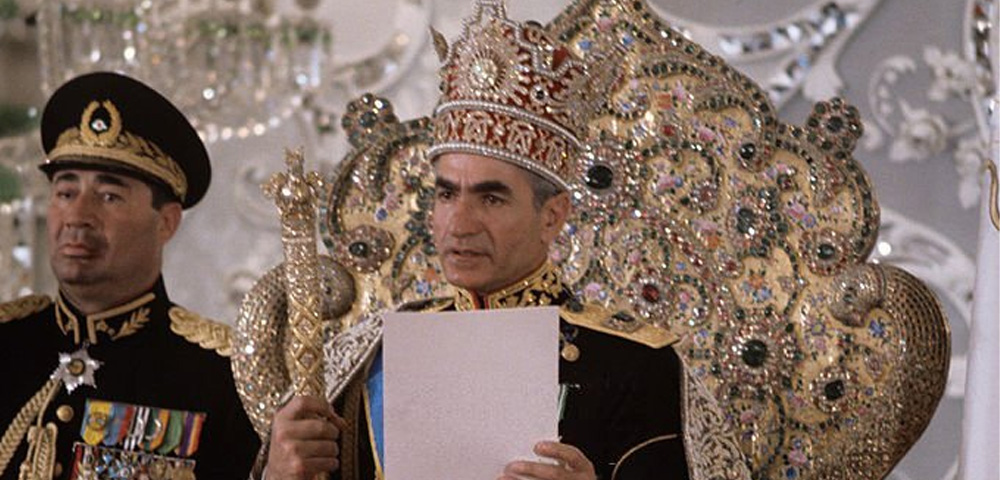
Then came the Pahlavi dynasty in the third decade of the 20th century. Its founder, Reza Shah Pahlavi, ordered that a different crown be made for him for his coronation ceremony in 1926, and named his crown, "The Pahlavi Crown".
Ten years after that coronation ceremony, the Iranian parliament decided that most of the royal gems and jewels would be deposited in the National Bank to support the Iranian currency. With the establishment of the Central Bank of Iran in 1960, the treasury was moved to it and is still preserved there today, and a part of it is displayed in the National Jewelry Museum of Iran, located in the basement of the bank.
Hearing is not like seeing, and a visit to the jewelry museum is a must, in order to see the creative artistic details in the crowns, thrones, studded swords, coins, golden goblets, candlesticks, and dozens of other objects decorated with precious stones. The jewel trove is distributed over 37 wings in the museum, the most important of which are:
The Peacock Throne
After artists in the city of Isfahan created the bejeweled throne-bed by order of Fath-Ali Shah Qajar in 1801, it was named "Tak̲h̲t Khorshid", or the Sun Throne, as it had a mirror in the shape of the sun.
But after the Shah spent his wedding night on Tak̲h̲t Khorshid with one of his 169 wives, a 15-year-old named Tawus (which means peacock) and nicknamed Taj al-Dawla, he decided to rename the throne-bed that had brought him together with the girl, "Tak̲h̲t al-Ṭawūs" (the Peacock Throne), in 1809. The name has been in use ever since, and is now also the name of a major street in the center of Tehran.
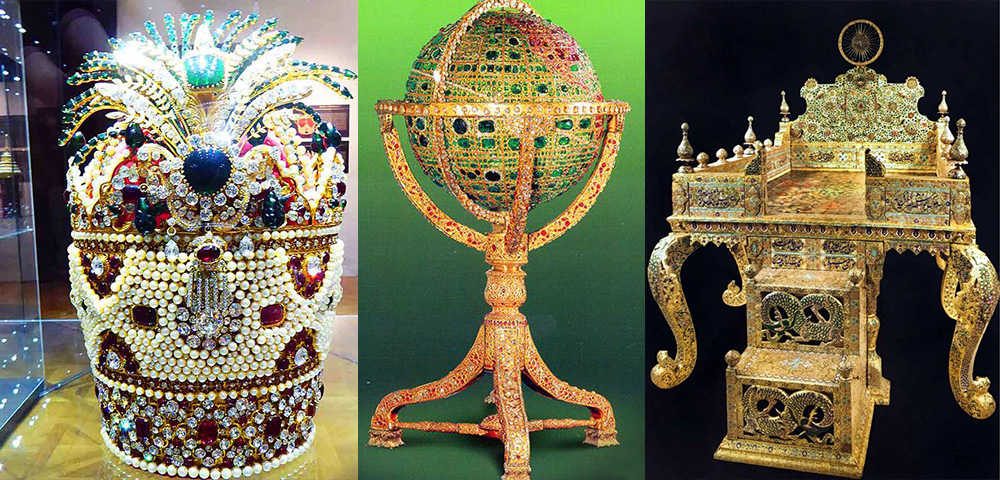
All the kings who followed after him sat on the polished, engraved and embroidered throne, which was decorated with 22,000 pieces of precious stones, including 1,444 diamonds, 1,431 emeralds, 885 rubies, 797 sapphires, spinels, and 4,527 other precious and semi-precious stones. Poems in praise of the Qajar kings were also inscribed on the sides of the throne, and there's a dragon engraving underneath.
The Kiani Crown
Before Fath Ali Shah, the second Qajar king, ordered the creation of the Peacock Throne, he had requested a royal crown in 1797, which would remain the crown of the Qajar sultans until the end of their reign.
After the introduction of Islam to Iran, the crown of the sultans became a turban known as "Jiqah", embroidered with feathers and precious stones, similar to that of the Ottoman Empire and the rest of the Islamic Mamluks, and this is how the Kiani crown was made. During the reign of the fourth Qajar king, Naser al-Din Shah, the turban was changed, and more emeralds, diamonds and feathers were added, changing the composition of the crown. The design of the crown was then imprinted on the Iranian flag, coins, medals of honor and stamps.
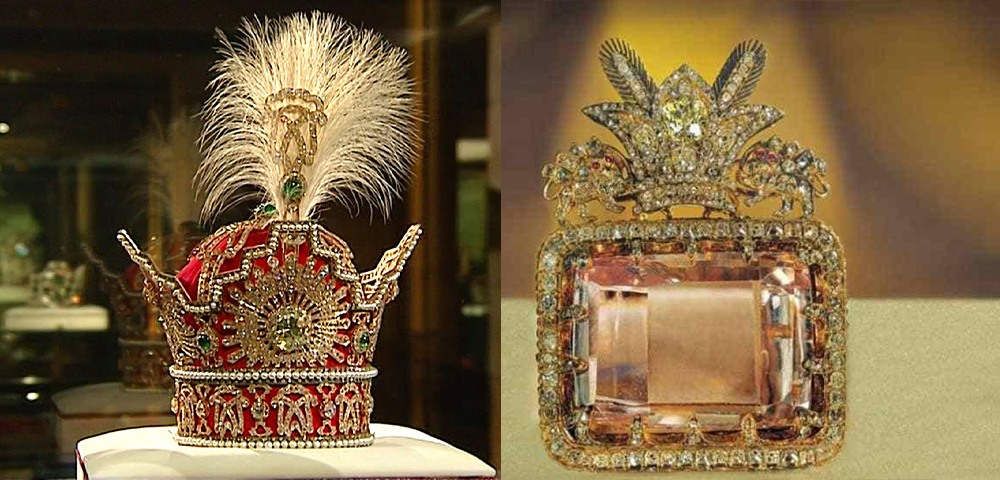
The Sea of Light Diamond
Daria-i-Noor, known as the 'Sea of Light' diamond, is one of the most expensive and luxurious diamonds ever known. It is one of the world's largest cut diamonds, and is famous for being the largest piece of pink diamond in the world, which Nader Shah Afshar had brought with him as war trophy during his conquest of India.
According to the last time it was weighed in March 2016, it weighed 57/180 carats, equivalent to 36 grams. Its light pink color is one of the rarest in brilliant-cut diamonds.
The 'Sea of Light' diamond is one of the world's most luxurious and largest cut diamonds. Believed to be a gem from the crown jewels of the Persian king, Cyrus the Great, its light pink color is one of the rarest in brilliant-cut diamonds in the world
Naser al-Din Shah al-Qajar believed that the Sea of Light diamond, which he owned in 1848 when he ascended the throne, was a gem from the crown jewels of King Cyrus the Great, one of the most famous pre-Islamic Persian kings.
That is why he took great care of it, and used to put it on his arm, and then ordered that a miniature frame decorated with the royal emblem (the sun and the lion) be made for it. 457 diamonds and 4 small sapphires were added to its frame.
The King's Crown and the Queen's Crown
When Russia and Britain occupied Iran in the aftermath of World War II, Reza Shah fled the country in solidarity with German leader Hitler in 1941. His son Mohammad Reza, 22, ascended the throne in his place, but the occupation and chaos that were plaguing the country stood in the way of holding a coronation ceremony for him.
The value of Iran's royal jewelry isn't limited to its economic value, but it's considered the state treasury reserve and the main support for the country's economy. From a professional view, the world's elite jewelry experts cannot price this treasury
After 26 years, the king decided to hold a grand royal ceremony for himself, and crowned himself with the Pahlavi crown that sat atop his father's head for 16 years. The structure of this red velvet crown was made of gold and silver, similar to the crowns of the Sassanid kings before the era of Islam, and not like the crowns in the era of the Safavid, Qajar and Afsharid kings. It weighs about 2,080 grams, and contains 3,755 pieces of diamonds, emeralds, rubies and pearls.
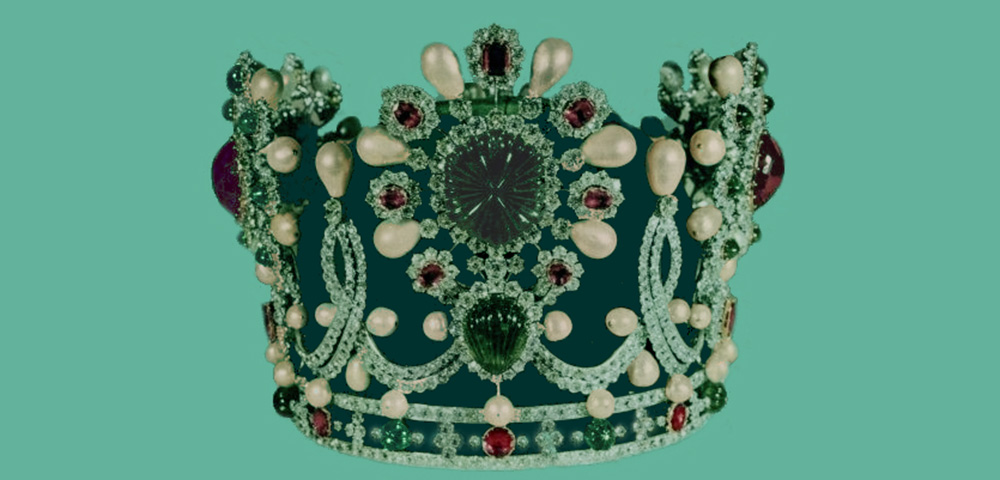
Before the ceremony in 1967, the Shah also ordered that a crown be made for his wife Farah, using the jewels of the royal treasury. This was a rare event that had never been seen in the history of Iran before, as the Shah's wife was going to be crowned with an official royal crown just like the king. Therefore, it was decided that the design would be made by the company "Van Cleef & Arpels", but Iranian law does not allow the treasury assets and property to leave the country, so the French company sent its team to Tehran to work on making the queen's crown over a period of time that extended for 6 months.
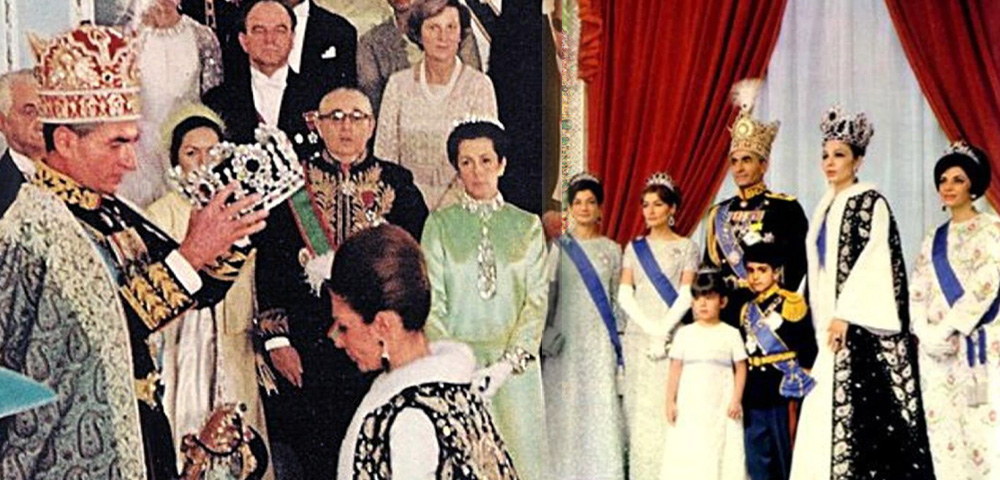
The details of the crown are as follows: the embroidery was done in white gold on a green velvet hat made of jade. It was then decorated with 38 pieces of emerald, 34 rubies, 105 pearls, and 1,446 diamonds. As for the front of the crown, it consisted of a hexagonal emerald weighing 150 carats (30 grams) that today is considered one of the most beautiful and exquisite pieces owned by the country's National Jewelry Museum.
The value of Iran's royal jewelry isn't limited to its economic value, but it is considered the reserve of the state treasury and the main support for the country's economy. From a professional point of view, the world's elite jewelry experts cannot put a price on this treasury, even roughly.
Raseef22 is a not for profit entity. Our focus is on quality journalism. Every contribution to the NasRaseef membership goes directly towards journalism production. We stand independent, not accepting corporate sponsorships, sponsored content or political funding.
Support our mission to keep Raseef22 available to all readers by clicking here!
Interested in writing with us? Check our pitch process here!
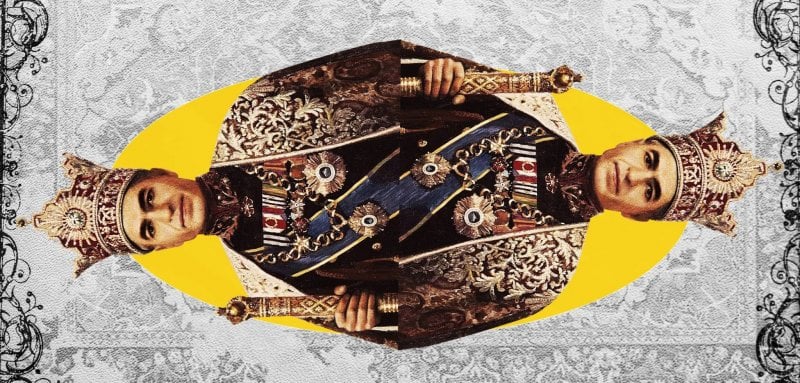
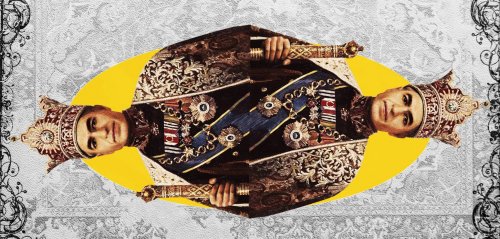
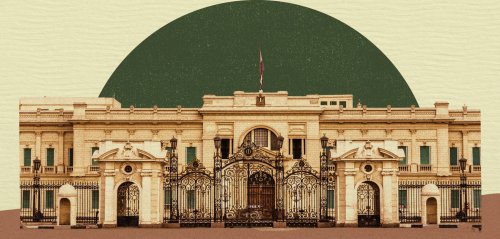
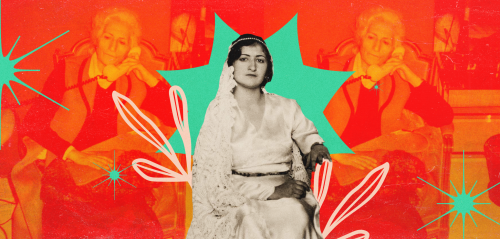
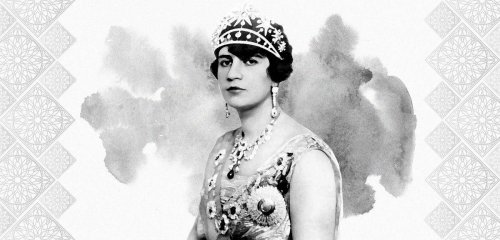



Join the Conversation
Hossam Sami -
51 minutes agoصعود "أحزاب اليمين" نتيجة طبيعية جداً لرفض البعض; وعددهم ليس بالقليل أبداً. لفكرة الإندماج بل...
Anonymous user -
1 day agoرائع و عظيم ..
جيسيكا ملو فالنتاين -
5 days agoزاوية الموضوع لطيفة وتستحق التفكير إلا أنك حجبت عن المرأة أدوارا مهمة تلعبها في العائلة والمجتمع...
Bosaina Sharba -
1 week agoحلو الAudio
شكرا لالكن
رومان حداد -
1 week agoالتحليل عميق، رغم بساطته، شفاف كروح وممتلء كعقل، سأشاهد الفيلم ولكن ما أخشاه أن يكون التحليل أعمق...
Anonymous user -
2 weeks agoهذا ليس طبيعيا، وهو ينشئ في الحالات القصوى من اضطرابات ومشاكل نفسية. الإنسان العاقل عندما يواجه...